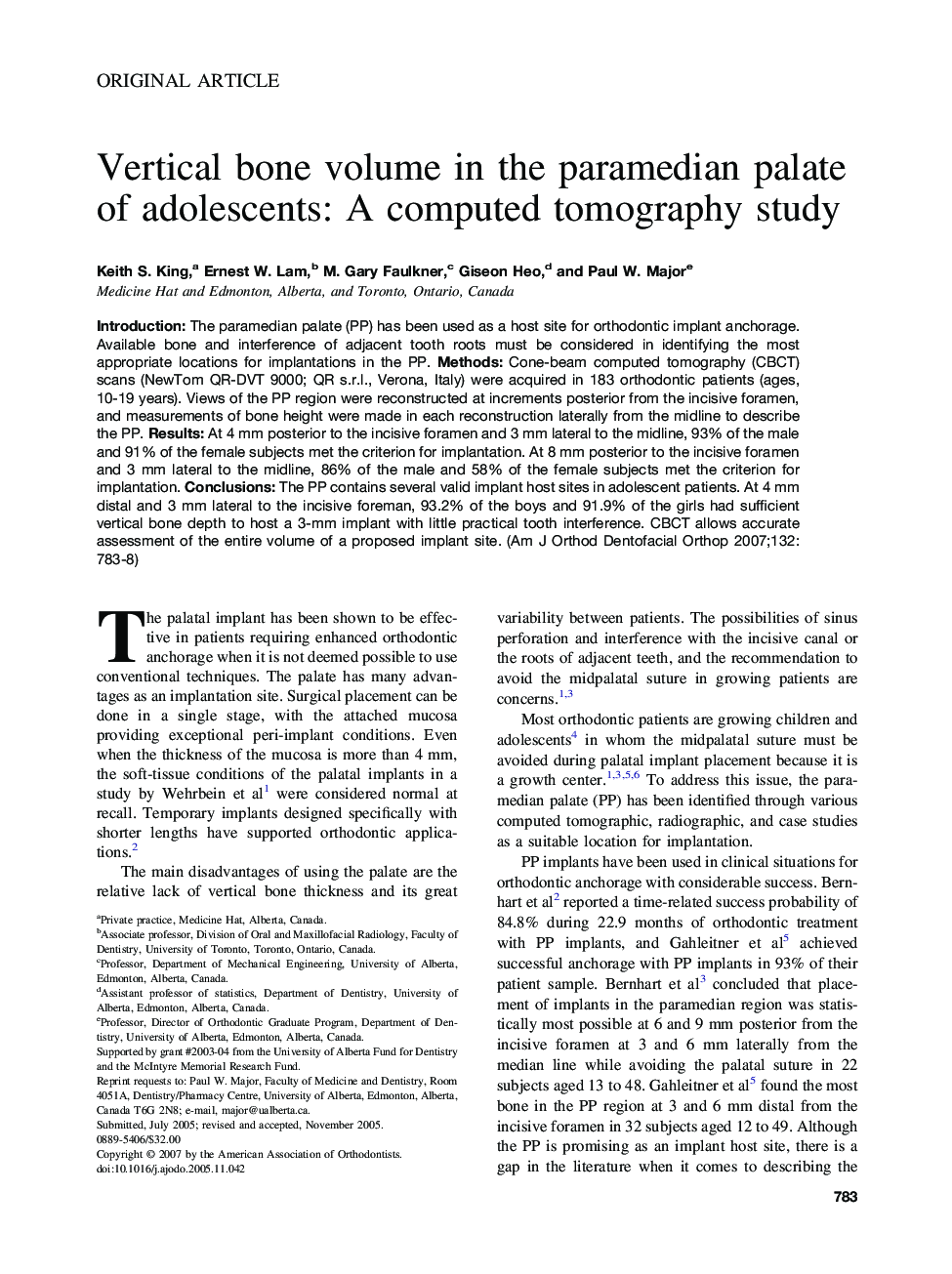| Article ID | Journal | Published Year | Pages | File Type |
|---|---|---|---|---|
| 3118634 | American Journal of Orthodontics and Dentofacial Orthopedics | 2007 | 6 Pages |
Introduction: The paramedian palate (PP) has been used as a host site for orthodontic implant anchorage. Available bone and interference of adjacent tooth roots must be considered in identifying the most appropriate locations for implantations in the PP. Methods: Cone-beam computed tomography (CBCT) scans (NewTom QR-DVT 9000; QR s.r.l., Verona, Italy) were acquired in 183 orthodontic patients (ages, 10-19 years). Views of the PP region were reconstructed at increments posterior from the incisive foramen, and measurements of bone height were made in each reconstruction laterally from the midline to describe the PP. Results: At 4 mm posterior to the incisive foramen and 3 mm lateral to the midline, 93% of the male and 91% of the female subjects met the criterion for implantation. At 8 mm posterior to the incisive foramen and 3 mm lateral to the midline, 86% of the male and 58% of the female subjects met the criterion for implantation. Conclusions: The PP contains several valid implant host sites in adolescent patients. At 4 mm distal and 3 mm lateral to the incisive foreman, 93.2% of the boys and 91.9% of the girls had sufficient vertical bone depth to host a 3-mm implant with little practical tooth interference. CBCT allows accurate assessment of the entire volume of a proposed implant site.
